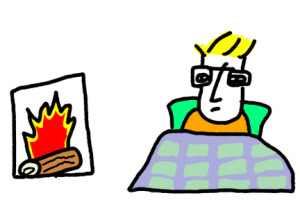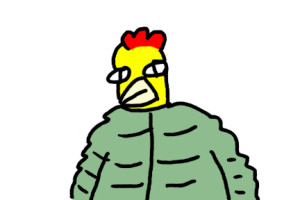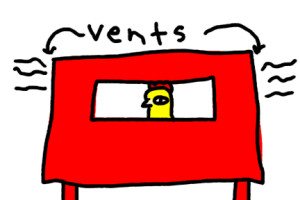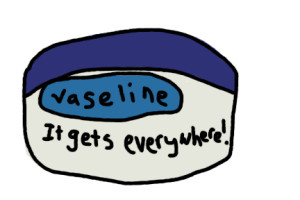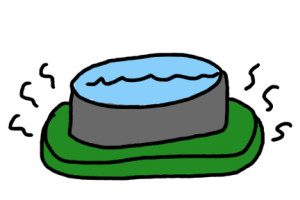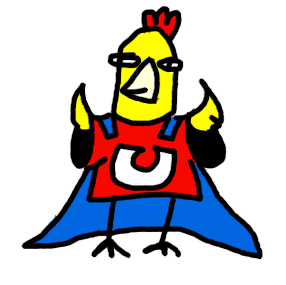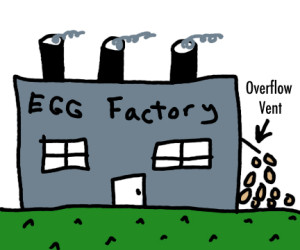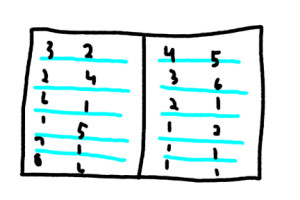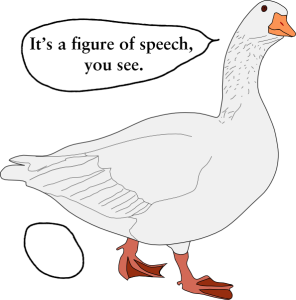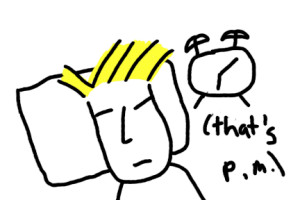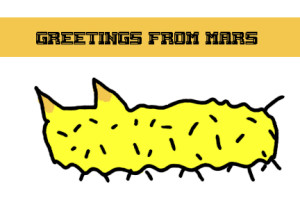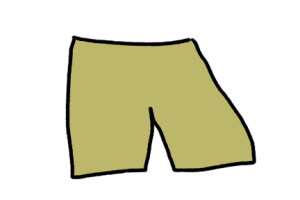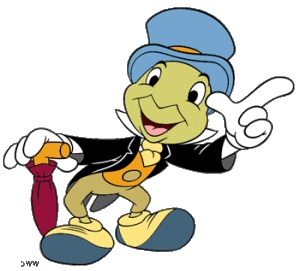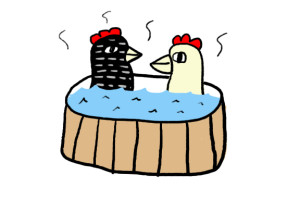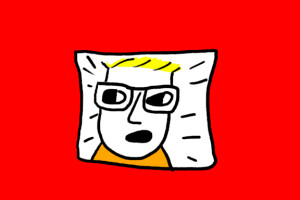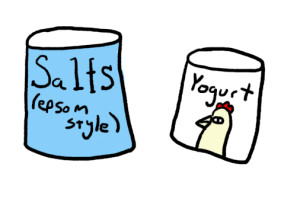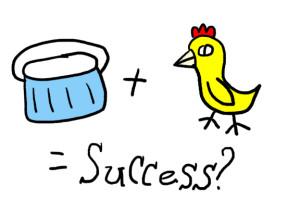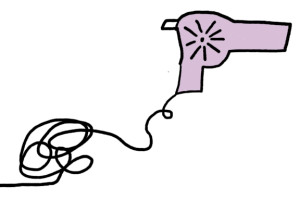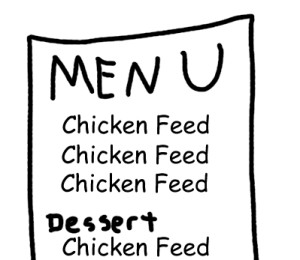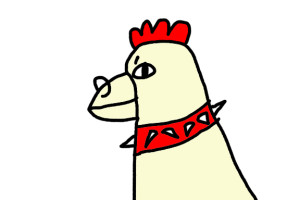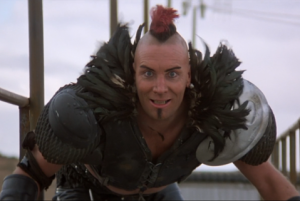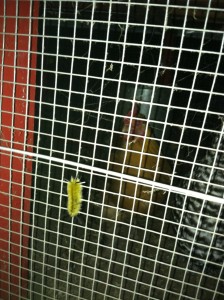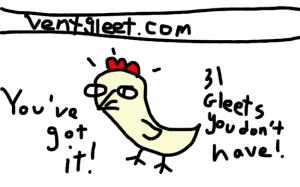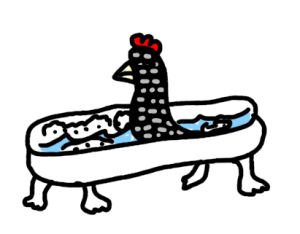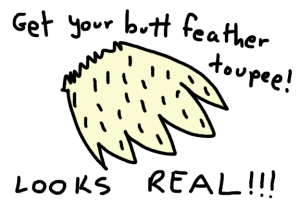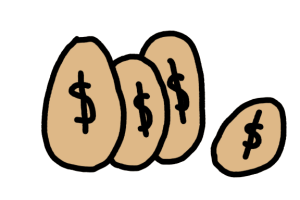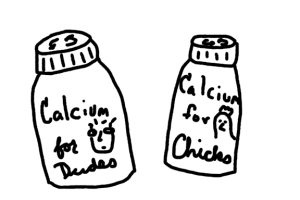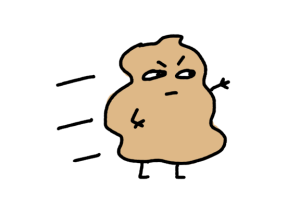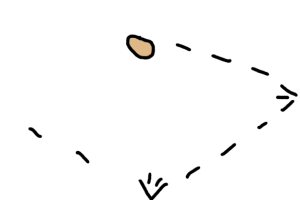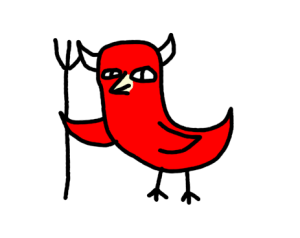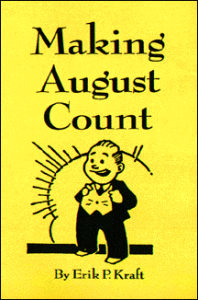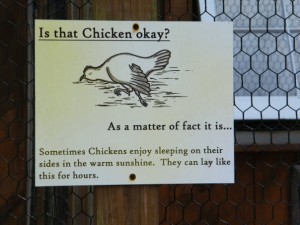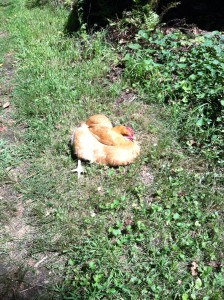Winter Is Coming
Friday, November 8th, 2013(Broadcast 11/8/2013)
It seems to have gotten colder lately, and for some reason it’s getting dark really early. What’s up with that? Oh, right. It’s fall. Fall is great, but the big problem I have with it is that winter is always right behind it. I suppose winter is fine as long as I don’t have to go outside in the cold, but society seems opposed to letting me just hole up until spring. Of course, even if I could find a way to not have to go to work, the chickens are outside, so at the very least I’d have to go out there periodically to fulfill my chicken duties. And I suppose if I have to go outside at all, I might as well just keep doing what I’m doing. If you can tell me what that is, I’d be grateful.
But what about the chickens? How do they feel about winter? Well, I haven’t cracked their code yet, so I don’t quite have a handle on their feelings. However, I know that lots of people seem concerned about what I do with them in the winter. Don’t they get cold? I like to point out that they’re wearing down jackets, but not everyone catches my drift. What I mean is that they are covered in feathers, which keep them warm. They can probably deal with the cold a lot better than I can. What about putting a heat lamp in the coop? Again, they’re wearing down coats! But there’s more to it than that. There’s no electricity in our coop, and to run an extension cord all the way out there seems pretty hazardous. Then there’s the possibility that I could burn the coop down with a heat lamp. I’ve also heard that if you do give them a heat lamp, they’ll get accustomed to it, and so if something should happen to the lamp, like a power outage, they won’t be used to the cold, and this could cause problems. I’m not sure if that line of thinking is sound, but since I have no electricity anyway, I don’t have to worry about it. Chickens have been dealing with the cold without heat lamps for a very long time. I think they know what they’re doing.
Something I do get concerned about is making sure there are no drafts, but plenty of ventilation in the coop. This may seem like a conflict of interests, but it isn’t if you do it right. When I was building the coop, I came across a rule of thumb that said “think about how many vents you think you need. Now double that.” The concern with the coop is not so much the cold, but moisture. Chicken poop is very moist. If that moisture doesn’t have somewhere to go, it will get on the chickens and freeze, which is how you can come to get frostbite on combs and wattles. A big draft is going to cause problems because you don’t want a steady stream of cold air rushing through. But you also don’t want something air tight, or the moisture gets trapped. I see this come up in talks about insulating coops all the time. The insulation can also trap the moisture. Moisture is the villain, not the cold. So I made sure I put in vents up high that didn’t point right at the roost, and that’s about it.
I did once attempt to put vaseline on the chickens’ combs when the temperature dipped into the single digits. This might have gone better if I had had an assistant, but I was there, alone in the dark, with a chicken in one hand and a fistful of vaseline in the other. Some of that vaseline did actually end up on the chickens’ combs. The rest of it ended up everywhere else. I plan on rethinking this technique.
I do have some problems with dealing with the water bowl in the winter. An easy thing is to do is bring it in at night. They’re sleeping, so they have no need for it. During the cold days, though, it’s a little trickier. Some people use electric heated dog bowls, but there’s that “no electricity” thing popping up again. I recently saw a suggestion of putting ping pong balls in a bowl of water, and the balls floating around keep the water from icing up. I think this really only works for temperatures close to freezing. After a certain point, the ping pong balls can only do so much. The solution I use now involves a microwaveable dog bed heater called a “SnuggleSafe.” It’s a round disk you nuke for a few minutes, and it stays warm for allegedly up to 8 hours. I put that under the water and hope for the best. I had been using those little glove warmer packets for a while, so this is a big improvement. I also put apple cider vinegar in the water, which lowers the freezing point a bit, but not enough that I don’t need something else. If it’s really cold out, the water will be frozen when I get home, but I’m gone more than 8 hours. Maybe the claims of 8 hours of warmth are true, but I can’t really tell. The chickens seem fine though, so I’ll take that to mean the system is working.
Staying warm takes energy, so I also make sure they’ve got plenty of food. But other than that, I made sure I got breeds that could deal with cold temperatures. They’re built for this stuff. And when I start to worry that maybe it is getting too cold for them out there, I remember how many people from Minnesota or Canada have piped up in online discussions about how cold it gets where they live, and their chickens do fine without any extra help. I sure don’t want to be out there with them, but they seem to like winter just fine. I think they might be kinda nuts.
